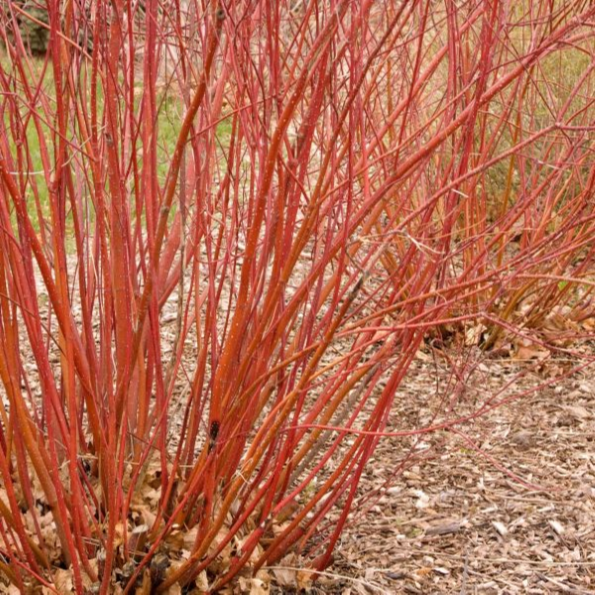- 2024 Native Trees
- >
- Native Trees
- >
- Red osier Dogwood (Cornus sericea)
Red osier Dogwood (Cornus sericea)
Height: 8 to 10 feet
Spread: 7 to 10 feet
Bloom Time: May to June
Bloom Description: White
Flower: Showy
Attracts: Birds and Butterflies
Sun: Full sun to part shade
Suggested Use: Hedge, Rain Garden, Natural Border
Tolerate: Deer, Wet Soils, Clay
Native to: Jefferson County
When Walt Whitman wrote “I contain multitudes” he may have been conjuring up the image of the Red osier Dogwood.
The Red osier Dogwood is a great understory tree that provides visual interest 365 days out of the years, and in addition to the aesthetics is a great species for lovers of wildlife.
This tree species is a hardy little thing that will tolerate a multitude of growing conditions. From clay soils to swampy conditions it will grow. Full sun to shade it will grow. Green thumb or black thumb it will grow.
An upright suckering understory tree that will colonize if left unchecked the tree provides a nice backdrop to the landscape and habitat to a variety of birds and tree frogs. The new and young stems have a rich red color that turn more vibrant in the winter and the plant can tolerate coppice to 8” above the ground to regenerate growth. Some owners trim out 20-25% of old growth every year to keep the desired look.
The flowers are borne in clusters that appears as 3 inch diameter flat topped cymes in late spring. Sparse flowering will intermittently appear through summer. Flowers give way to a blue tinted drupe that have more visual interest than the flowers themselves.
The Mingo called the tree kahsísat while the Lenape referred to it as tuwchalakw. André Michaux named it Swida stolonifera but Linnaeus later changed it to Cornus sericea. John Bartram's Garden Catalogue of North American Plants, 1783, included this species as the "Red Willow" dogwood and Philadelphia nurseryman Bernard McMahon's Catalogue of Seeds, 1804, listed Cornus sericea as the "Blue-berried Dogwood."
Red osier dogwood is favored by many native bees who utilize the oft hollow stems for an abode. Spring peepers are commonly found in the branches and beneath the leaves. Birds love the fruit and feast on the caterpillars of the over 111 species of Lepidoptera that use it as a host plant.■






